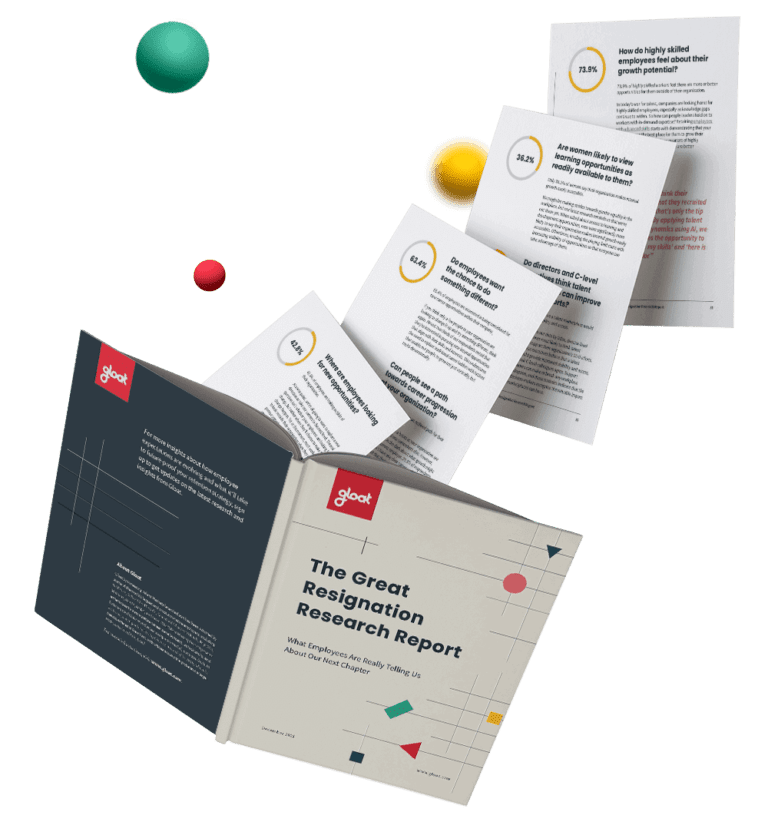Great Resignation Research Report
By now, we know the Great Resignation isn’t a short-lived fad. It’s a once-in-a-lifetime call to action. But what’s really going to move the needle on workplace turnover?
To answer this question, the Gloat Research Board commissioned a survey of over 1,000 workers, analyzed the results, and compiled the key insights you’ll need to future-proof your retention strategy. If you want to learn what’s really fueling the Great Resignation, download the report now.






